In retrospect, there are so many diverging pathways that have led to where Epcot is now… so many that it’s practically chaos theory to trace the lines one-by-one, or to assemble a single narrative timeline of what happened. In short, we'll boil it down to three issues that plagued the young park.
ISSUE 1: Too smart for its own good
Image: Disney
Intellectually lofty and clearly aimed closer to Walt Disney World's adult demographic, EPCOT Center gained a reputation as the Disney park kids dreaded spending a day at; the park became a punch line of sorts for how no child would trade a day in Magic Kingdom merriment for educational dark rides through the history of transportation. What child would give up a day on Pirates of the Caribbean for a 45-minute, intellectual dark ride through the formation of fossil fuels? Replace Peter Pan's Flight with a cinematic retelling of the history of communication from the stone age to the Renaissance to today?
Granted, by nature of reading this, you are probably one of the children who would've happily chosen and was shaped by a day at EPCOT Center... But for a generation of Disney Parks visitors, we simply have to admit that the park's lofty, intellectual ideals simply felt too brainy for a trip otherwise populated by Mickey Mouse, Cinderella, and Snow White.
ISSUE 2: Losing sponsorships
Image: Disney
EPCOT Center relied on a World’s Fair style sponsorship model matching mega-corporations with complementary pavilions; though Disney expected the contribution of deep-pocket corporations to keep the park afloat, many decided not to renew their sponsorship throughout the ‘90s.
That's why – as we'll see – the mid-90s were a period of (forced) evolution at Epcot, with Disney suddenly overtaking financial ownership of aging pavilions. What's worse, Disney didn't necessarily have the internal capacity to keep these ambitious, industry-focused pavilions stocked with the cutting edge technology that Future World called for, and that sponsors had previously provided.
ISSUE 3: A new style
Image: Disney
When new CEO Michael Eisner came on-board just two years after EPCOT Center’s opening, something was bound to change. The cinematic CEO fresh from Paramount Pictures had ambitious plans. Among them was a controversial sense that Disney Parks needed to evolve. Just as Walt had stocked Disneyland with the stories, characters, and settings that mattered to audiences of the '50s, Disney's theme parks would need to catch up to "modern" (that's '80s and '90s) audiences by bringing the stories, characters, and settings that mattered today.
Maybe that's why Eisner and his team seemed to wrestle with what exactly EPCOT Center should be. Designed as a "character-less" park, EPCOT Center was pulled into a "character" driven era at Imagineering, which is perhaps why the once-clear line in the sand began to shift position. And given the state of Disney Parks finances at the time, Future World began to act as a guinea pig of sorts with a few new strategies at play...
So let's switch from Issues to Disney's Strategies for fixing Future World...
STRATEGY 1: Character infusion
Image: Disney
Despite an early moritorium on incorporating Disney characters, they began to creep into the park fairly early. Sure, Mickey and friends began making appearances in their future-appropriate pastel-rainbow space suits early on. Then, animated characters began meeting-and-greeting in the World Showcase countries most closely aligned to their (often fictional) homes. Still, there was a sort of "untouchability" to Epcot's firmly-held, ambitious, and downright intellectual attractions... Until there wasn't...
Image: Disney
In 1994, the Lost Legend: Captain EO was exorcised from the Imagination pavilion, replaced with “Honey, I Shrunk the Audience,” based on Disney’s 1989 family film. It's not that Captain EO rose to the intellectual heights of EPCOT Center anyway (instead being a quick-turnaround attempt by Eisner to draw more young people to Disney Parks by way of big name stars), but "Honey, I Shrunk the Audience" might technically count that as the first appearance of outside characters in Future World.
In 1995, Timon, Pumbaa, and Simba from The Lion King joined as well, taking over the serious Symbiosis film in The Land, now officially cracking the dam that held Disney's cartoons at bay.
Image: Disney
In 1996, Universe of Energy was quickly converted into the Lost Legend: Ellen’s Energy Adventure, somewhat nonsensibly adding Ellen Degeneres (star of the recently-acquired ABC’s Ellen sitcom), Alex Trebek (from Jeopardy!) and Bill Nye the Science Guy – a similar "quick character fix" as Captain EO has been.
The elaborate, fan-favorite Lost Legend: Journey into Imagination closed in 1998, officially decommissioning two of the brilliant characters created just for the park. The replacement attraction – a Declassified Disaster: Journey into YOUR Imagination– is derided by many as the world ride Disney World has ever hosted. The new version of the ride purposefully pulled in the "Honey, I Shrunk the Kids" continuity so that the entire pavilion would be re-themed as the Imagination Institute.
Image: Disney / Pixar
Like The Lion King in The Land, a little "spill-over" of character made it into The Living Seas in 2004, when Turtle Talk with Crush opened. It was merely a taste, though, because in 2006, the Living Seas pavilion was entirely overtaken by Finding Nemo and renamed The Seas with Nemo & Friends – for sure the largest character infusion in Future World (as we chronicled in our Disney•Pixarland special feature), but still a simple character overlay and not an outright replacement of Epcot's core idea.
So when looking at "Strategy 1," we have to face the truth: without sponsors to finance pavilions and keep them cutting edge, gentle, subtle infusions of Disney characters (and even entire overlays like The Seas!) might've been a fine strategy to move Epcot forward. The problem is, it wasn't the only strategy...
STRATEGY 2: “Discovery” thrills
With the new millennium on the horizon, it was decided that Epcot needed more than just a character infusion; it needed to be rethought from its core (see Issue 1, above). In a feature dedicated to a never-built overhaul of Future World – Possibilityland: Project - GEMINI – we explored the potential designers saw in transforming the cold, concrete, ‘80s Future World for the 21st century. The idea was that Epcot would become Disney World’s “Discovery Park,” filled with cutting edge, technological thrills. Though that park-wide overhaul didn’t come to be, pieces of it did.
Image: Disney
The park’s transportation pavilion was gutted in 1996, re-opening as a high speed ride whose original incarnation is itself a Lost Legend: TEST TRACK. Fittingly, this thrill ride showcased the new direction for Epcot: replacing epic, educational dark rides with more fast-paced technological attractions that kinda-sorta hinted at a scientific or industrious theme. Of course, no one would expect a thrill ride based on becoming test dummies in an auto plant to meet the lofty awe-inspiring, thoughtful heights of World of Motion... But TEST TRACK was, admittedly, somewhat brainless.
As another example, see Horizons, which was demolished and replaced with Mission: SPACE – a gut-wrenching simulator whose infamous nausea-inducing ride system seemingly exists just to push the boundaries of what simulators can do, and is otherwise a pretty content-free thrill ride. Okay, it's kinda-sorta about what it would feel like to launch into space, but there's certainly very little to be learned about space or humanity's journey towards it from this intimidating thrill.
Image: Disney
Beloved as it may be, the opening of the Lost Legend: Soarin’ in The Land pavilion would probably be classified as another “cute but dumb” addition to the park, kinda-sorta making sense in The Land (what with its emotional celebration of California's landscapes). That said, the 2016 "upgrade" to the "Around the World" ride film (sending guests over man-made wonders of the world) technically makes it a worse fit for The Land...
So coming out of the 1995 - 2005 decade, Epcot was well and truly transformed. But the problem we'd argue is that that transformation was a piecemeal one, with one of two very different strategies kinda-sorta overlaid overtop of most – but not all – of Future World's pavilions. And standing here in 2018, that's the problem. What is Epcot? Well, that appears to be a question set to be answered by the latest attraction under construction at the park... one that appears born of an entirely new, third strategy for Future World... Read on.
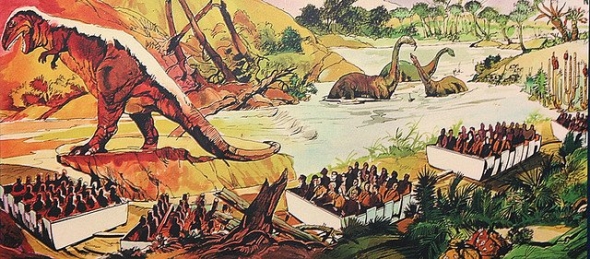
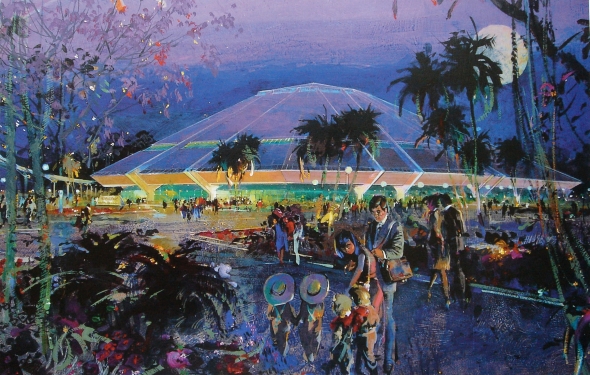
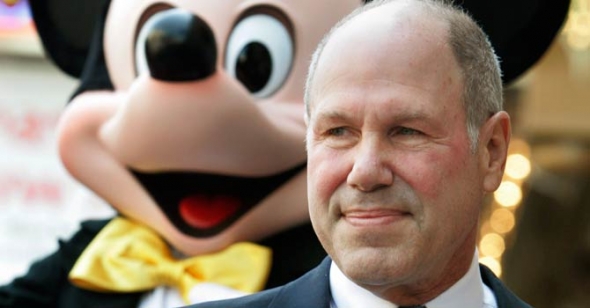
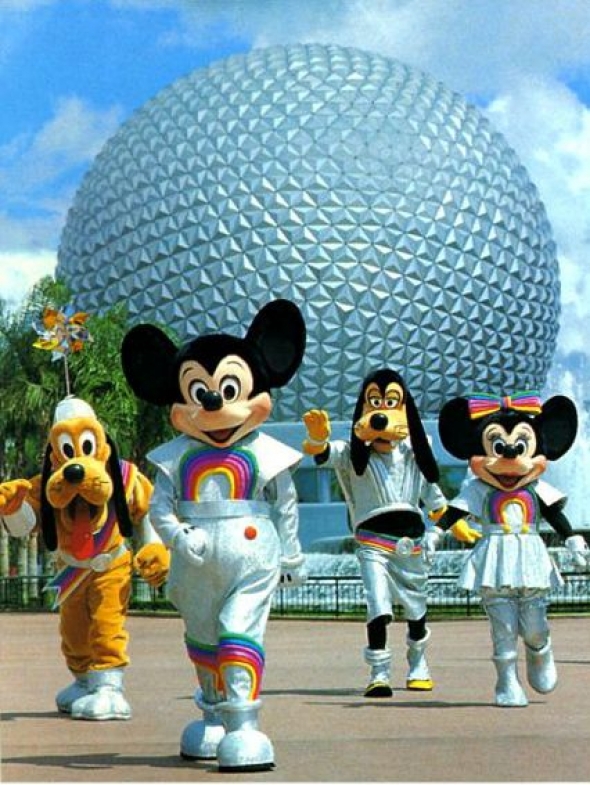
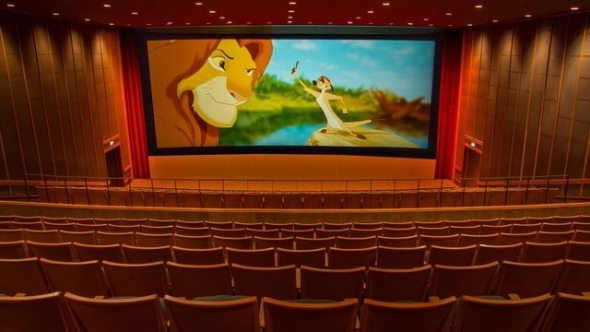
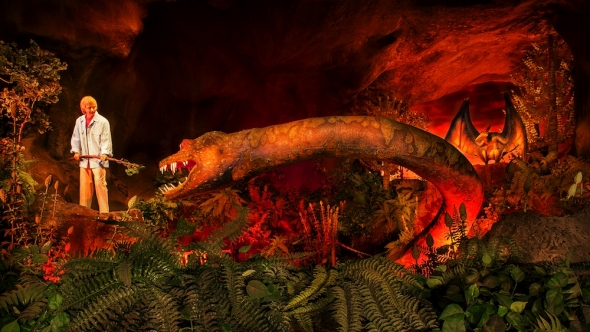
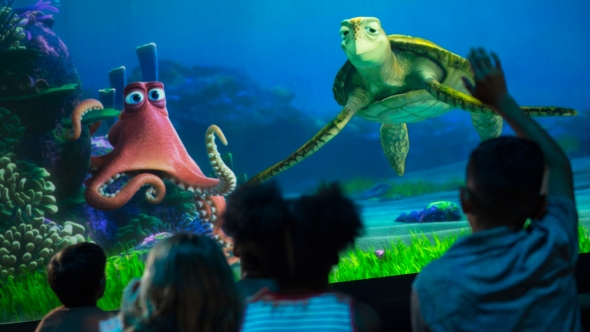
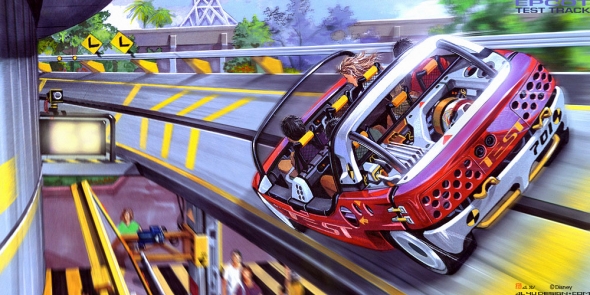
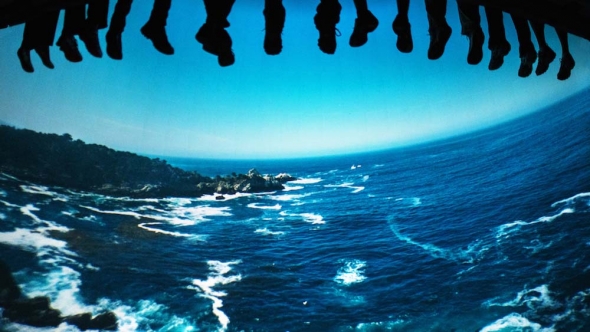

Add new comment